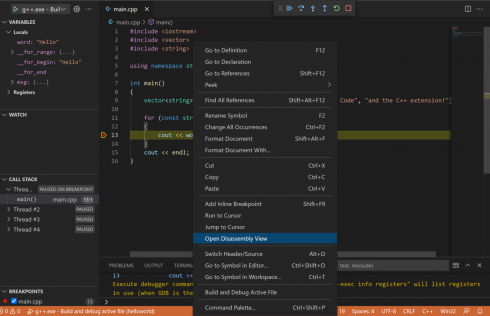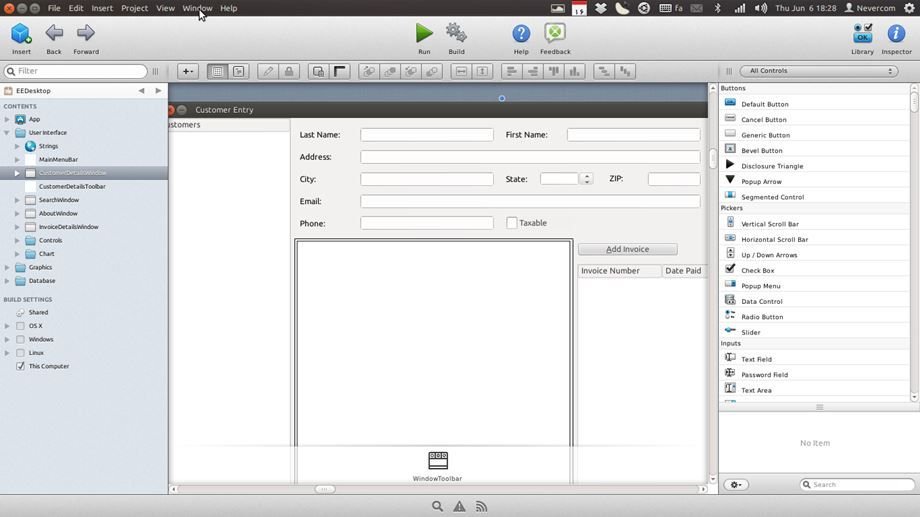
All that does is open Excel in the background. In this case, the string to pass is "Excel.Application". To gain access to Excel, we import win32com.client and then call its gencache.EnsureDispatch, passing in the application name that we want to open. Let's take some time and unpack the code. It is actually based on an example I saw in Wesley Chun's excellent book, Core Python Programming. The example above is similar to what you will normally find on the web. Sh.Cells(1,1).Value = 'Hacking Excel with Python Demo' Let's take a look at a simple example, shall we?

One advantage of xlrd and xlwt is that you can use them on any platform.

Note that the following scripts only work on Windows.
Xojo vs python how to#
Here we'll see how to mess with Excel using the PyWin32 interface. They are called xlrd and xlwt, respectively. In fact, there are several non-PyWin32 modules specifically created to read and write Excel files. If you've looked for examples of using Python and Office, you'll usually find that the most often hacked component is Excel. However, PythonWin comes with the PyWin32, so if you do run into trouble, you can try it. I don't think I needed to do that to make it work though (at least, not with the 2007 version). Some forums say that you need to run PythonWin's makepy utility on Microsoft Word (and Excel) before you can access Office applications. For this article, you will learn how to use the PyWin32 module to access some of the Office programs and manipulate them with Python. It may not be as easy as recording a macro, but it's close. Python can be used to script (AKA automate) Office and make it easier for us or our users to use. While Office may be the bane of tech support, we still have to deal with it. *Updated from an original post written by Thom McGrath.Most typical users have used Microsoft Office. Run the project and watch the text change when you hold and release the Option/Alt key.
Xojo vs python code#
In the Timer subclass, put this code in the KeyDown event: Label1.Value = "You are pressing Option."Īnd in the KeyUp event put this code: Label1.Value = "Normal Text" To test this, add a Label to the Window which will be used to display different text when the Option key is held down. You’ll also want to adjust the period of the timer to something small such as 200 to make sure the events are responsive. Now go to your Window, place a Timer on it and set the super to “OptionTimer” and you can insert code into the events for that timer. Lastly add the Action event handler with the following code: If Keyboard.AsyncAltKey = True And Pressed = False ThenĮlseIf KeyBoard.AsyncAltKey = False And Pressed = True Then Next, add a property “Pressed As Boolean”, an event definition “KeyDown”, and a second event definition “KeyUp” to OptionTimer. Start by creating a new class called “OptionTimer” whose super is “Timer”. Also, the subclass will allow you to call events which can come in handy. Either technique will work, but the subclass creates reusable code, something I always recommend. The solution is to use a Timer to detect the Option/Alt key, though it could be adapted to read any of the modifier keys.įirst of all, we need to decide whether to create a Timer embedded on a Window, or to create a subclass. The problem is KeyDown/KeyUp does not get called for modifier keys. The goal is to inform the user that option-clicking the button will perform a different task.Īt first glance you might think that simply looking for the option key in a KeyDown event will do the trick.

For example, iTunes changes its “Previous Track” button from a rewind icon to a Genius Shuffle icon when the option key is held down. Sometimes it is necessary, or at least user-friendly, to adjust your interface when the user holds down modifier keys.


 0 kommentar(er)
0 kommentar(er)
